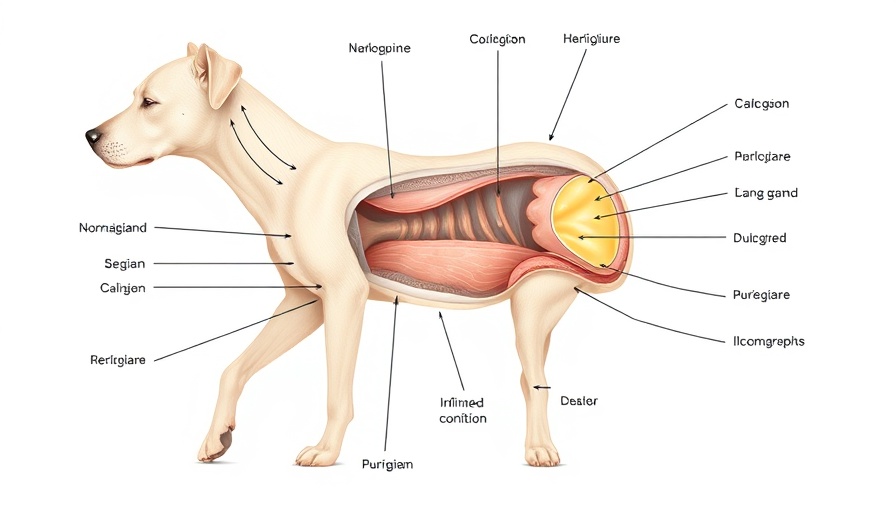
The Hidden Challenge of Anal Sac Issues in Dogs
For many veterinary clinics, anal sac problems in dogs can be a persistent and frustrating challenge, often resulting in repeat visits from pet owners. This issue not only strains the clinic's resources but also poses significant discomfort for the dogs involved. Understanding the reasons behind these recurring issues is vital for any veterinary professional seeking to enhance patient care and strengthen client relationships.
Understanding Anal Sac Anatomy and Function
The anal sacs are paired structures located just inside the anus, and their primary function is to secrete a fluid that serves as a form of identification for dogs. When a dog defecates, the pressure from the stool assists in emptying these sacs. However, when this process is disrupted—due to obesity, inadequate stool consistency, or other health problems—impaction or infection can occur. Consequently, veterinarians must recognize the importance of anal sac health as part of overall canine wellness.
Common Signs of Anal Sac Issues
Pet owners may notice several indicators that their dog is suffering from anal sac problems, including scooting, excessive licking of the anal region, or signs of discomfort when sitting. Addressing these signs early is crucial, as delayed treatment can lead to more severe issues, such as abscesses or ruptures, requiring surgical intervention. In busy veterinary practices, guiding owners on recognizing these symptoms could help manage cases more effectively and prevent unnecessary suffering.
Diagnostic Strategies for Effective Treatment
Accurate diagnosis of anal sac disorders is essential. As part of the diagnostic process, performing a thorough physical examination and assessing the dog's diet and lifestyle choices can uncover potential underlying causes. Fecal consistency is particularly relevant; techniques such as ultrasound or radiographs can further assist in identifying structural anomalies or other health issues contributing to recurring anal sac disorders.
Treatment Approaches: From Home Remedies to Surgical Solutions
Treatment for anal sac problems can vary widely, from dietary adjustments to surgical options. Increasing fiber in the dog’s diet can help ensure regular bowel movements and consistent stool, which can naturally express the sacs. In cases of frequent infections or impaction, more invasive options may need to be considered, including anal sac marsupialization—a procedure done to permanently open the sacs. Educating clients about these options can not only improve outcomes for their pets but can also enhance the clinic's reputation as a comprehensive care provider.
Future Trends in Managing Anal Sac Health
As more pet owners become proactive about their pets’ health, they are likely to look for clinics that specialize in effective management of anal sac issues. Innovations in veterinary medicine, along with telemedicine options for preliminary consultations, can provide clinics with new avenues to enhance their services. Additionally, offering continued education workshops on canine anatomy and health for pet owners could position veterinary practices as experts in their field, fostering client loyalty and trust.
Building Client Relationships Through Education
Incorporating educational content into the client experience can significantly enhance relationship-building efforts. Consider creating informational pamphlets detailing signs of anal sac issues and suggested dietary practices. Engaging clients with regular follow-ups and educational reminders about anal sac health can improve patient outcomes while also fostering a positive environment for client feedback.
In the competitive field of veterinary care, efficiently managing anal sac problems not only improves the health of furry patients but also the operational success of clinics. By recognizing the signs and enhancing treatment strategies, veterinary professionals can ensure their clinic stands out for quality care and customer service.
Understanding and addressing anal sac issues effectively can lead to improved client satisfaction, elevated clinic reputation, and enhanced profitability for veterinary practices. Ensure your clinic is at the forefront of veterinary care by prioritizing education, diagnostics, and customized treatment plans for each patient.
 Add Row
Add Row  Add
Add 

 Add Row
Add Row  Add Element
Add Element 




Write A Comment